The 10 Best Video Monetization Platforms in 2025
Video monetization platforms continue to create a variety of new business opportunities as skyrocketing growth has normalized into the widespread adoption of live streaming video in every format on every device.
Streaming research shows that video ads grew by 46% last year, with live content doubling its market share. Not to mention that online viewership is up by 72%.
That’s great news for broadcasters passionate about bringing their content to the world stage and those who wish to make video creation their full-time careers. Today’s content creators have a diverse toolbox of software and video monetization platforms. You can magnetize views and earn a living through video monetization if you have a unique perspective to share with the world.
The upsurge in video monetization options presents an opportunity for organizations to monetize their video libraries and create stable streams of recurring income. From ad-supported content and viewer subscriptions to pay-per-view (PPV) and on-demand services, monetization is the new standard of profitable media delivery and consumption.
All these choices can make selecting the right video monetization platform overwhelming for broadcasters, both newbies and veterans.
This article will explains how video monetization works and look at various video monetization models (AVOD, SVOD, and TVOD) proven to work for video creators like you.
We also look at how these can be used with both live streaming and video on demand. And, we touch upon paywalls and review the best video monetization platforms and streaming services of 2025.
Hopefully, this blog will help you make informed decisions about all the monetization options available to you, and the things you must keep in mind to maximize video monetization opportunities for your content.
The technology that video monetization platforms rely on is changing all the time. This post has been updated to reflect the most accurate information on the best video monetization platforms as of January 22, 2025.
What is Video Monetization?
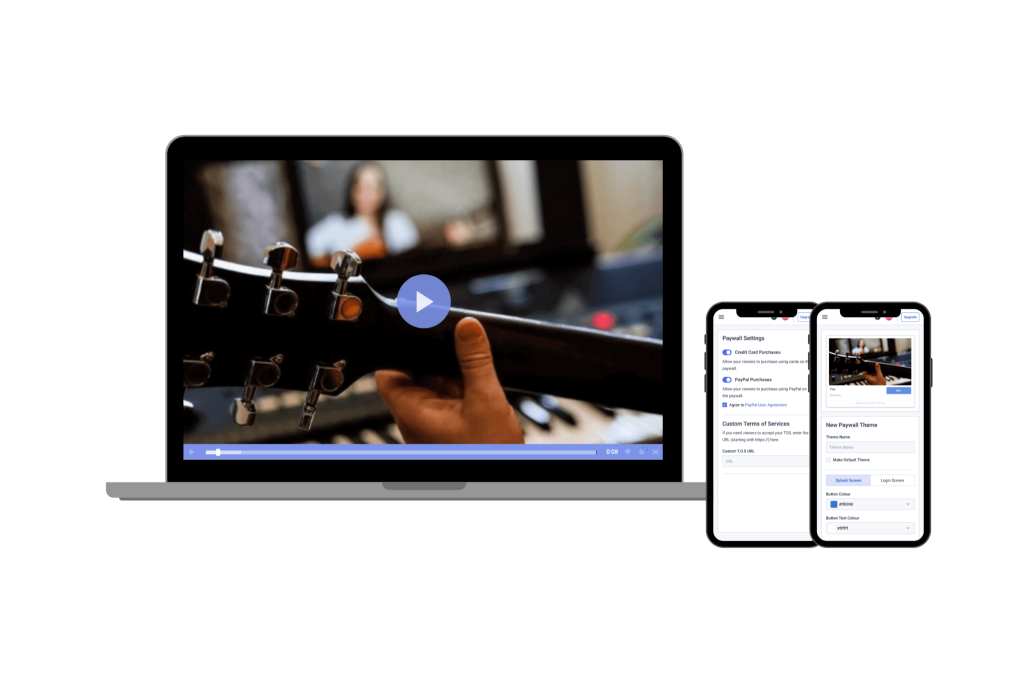
Video monetization means getting paid for the videos you publish online. Not so much for the creation but rather when audiences view or download your content. The more people watch, the greater your earnings from your videos are.
Broadcasters can generate revenue from their videos in many different ways. The most common include:
- Inserting ads
- Incorporating sponsors
- Offering subscriptions
- Creating product reviews
- Service reviews
- Asking users to pay to watch
Generating income from your videos is based on these distinct video streaming business models:
- Access to unique content: When you serve the needs of your audience well, followers will pay to view the content you create. Educational curricula, training courses, and other digital downloads are prime examples.
- Access to your audience: Advertisers with a product or service (that aligns with your brand) will sponsor ads or pay for placement within your video content. Think about promoting workout gear or supplements to a fitness audience or running team apparel ads during a live sports event.
- Access to your video platform: As a broadcaster, creating a subscription model to access premium content – or your entire video-on-demand library – is a smart monetization play. That model works especially well for media agencies, online publishers, and others with vast content collections that are already established.
Some organizations may hesitate to charge fees or subscriptions for premium content, believing that such actions will be perceived negatively or turn away loyal visitors. However, in the case of most brands, the opposite is true.
Utilizing the best ways to monetize videos doesn’t have to spell doom for your vision as a brand or organization.
Learning how to monetize videos and focusing on delivering value-added content is a surefire strategy to increase revenue for any brand. Remember that if the information you provide is valuable and compelling, viewers will gladly pay to benefit from it, especially if the content is entertaining, solves a problem, or helps viewers grow.
Video Monetization Stats and Facts
Are you still trying to determine if a video monetization strategy is worth the hassle for your brand? The best way to understand the true potential that video monetization unlocks is by seeing the stats.
Here are a few interesting trends in video monetization:
- The online video industry is forecasted to be worth $416.84 billion by the year 2030
- Experts expect the total value of global video subscriptions to reach $338 million this year
- Over half of the viewers report that they’d rather watch a live stream with ads rather than pay a subscription fee
- The median U.S. household now contains an average of five streaming devices, with 18% having ten or more
- 76% of US broadband homes now have OTT subscriptions
- Ad revenue from SVOD, the primary OTT revenue source, will grow from $19 billion in 2023 to $127 billion by 2029
Want to learn more about the general online video streaming video business and landscape? Check out our live-streaming video courses and statistics post to review 100+ stats and trends.
Common Video Monetization Models
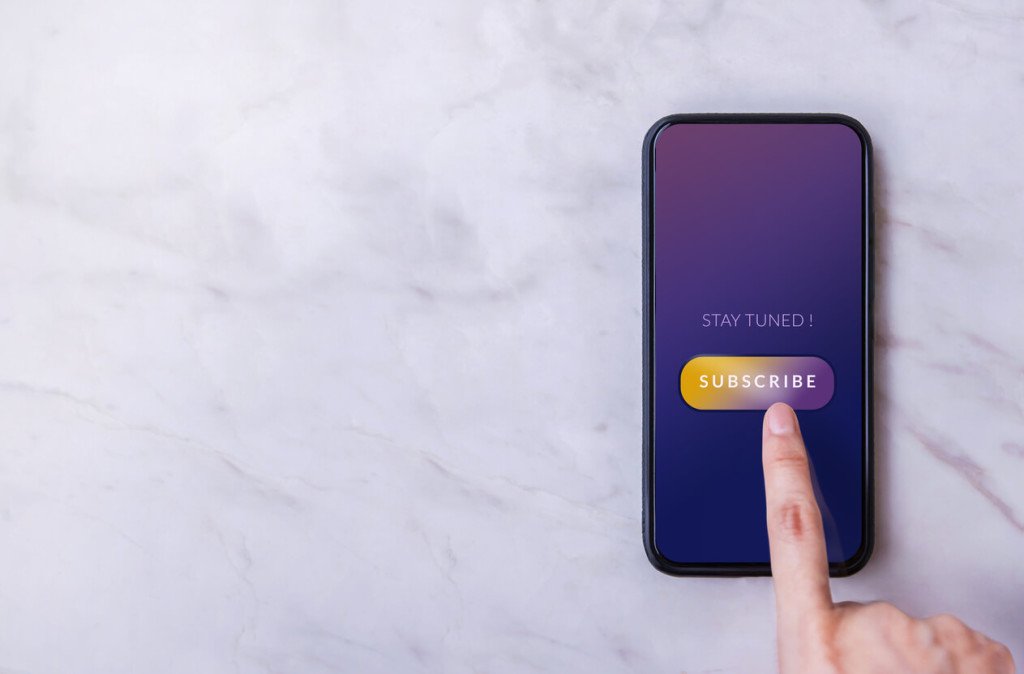
Although broadcasters can monetize video content in dozens of ways, most efforts fall within one of three main OTT specific monetization models: AVOD, SVOD, or TVOD. While all of them can be profitable, each one has its pros and cons. Plus, you may change your video monetization method over time depending on where you are in your video business life cycle.
Advertising-Based Video On Demand (AVOD)
Advertising-Based Video on Demand (AVOD) is a sponsorship model for video ads where ad placement costs are typically based on audience size. AVOD is a classic monetization format where brands pay you to run video advertisements for your audience. Once again, YouTube serves as a prime example.
As stated, the larger the audience, the more revenue AVOD video can generate. Advertising video on demand also provides a low entry barrier as it’s easy to set up and operate. Additionally, most online viewers prefer ad-supported free content as they are already accustomed to it. The fact that the viewers don’t have to pay anything to watch your content makes it even more favorable for them. In fact, 3.4 billion people now watch AVOD content.
AVOD Advantages:
- Most suitable for creators and publishers who want to promote their content online to a broad audience.
- High viewership
- Low risk
- Incentives
- improved ad targeting
- Perfect for offering consumers free and instantly accessible content.
AVOD Disadvantages:
- Potential poor user experience
- Risk of viewer retention rate decrease
- Revenue isn’t guaranteed
- Difficult measuring of ad’s impact
Subscription-Based Video On Demand (SVOD)
Subscription-Based Video On Demand (SVOD) is a widely-used monetization method or option where users pay a recurring fee to access video content. Netflix is an obvious example of SVOD in action. As long as user accounts remain current, members can access Netflix’s vast library of video content whenever and wherever they choose.
Although the name includes video-on-demand, SVOD can also apply to live-streaming content, like subscriptions to live sports packages or access to webinars from mentors or thought leaders. Subscription video on demand is one of the most profitable types of monetization, as organizations can develop recurring revenue for as long as they see fit.
They can also club it with other monetization methods like TVOD and AVOD to drive revenue growth and offer viewers better choices.
SVOD Advantages:
- Most suitable for video content creators and broadcasting platforms who want to offer consumers a convenient, ad-free user experience.
- Allows for a steady, recurring, predictable income stream.
- Gives you full control over content distribution and monetization.
- Promotes streamers’ stability and growth by supporting the building of a fan base.
- Supports paywall monetization, thus, ensuring that users access only content they pay for.
SVOD Drawbacks:
- High churn rate: Users can unsubscribe from a service whenever they want.
- Smaller audience reach.
- Requires a large video library to attract new subscribers and keep the existing ones interested.
Transactional Video On Demand (TVOD)
Transactional Video On Demand (TVOD), or “pay-per-view (PPV) streaming,” is another monetization method requiring viewers to pay upfront for each video watched or digital download requested.
Common examples include iTunes and the Google Play Store for individual downloads and pay-per-view (PPV) events for live streaming. TVOD is the opposite of AVOD, as viewers pay for every content they access.
Although transactional video-on-demand seems more restrictive, it can be highly profitable, especially for broadcasters covering many topics or those with specialized experience in a specific niche. Also, it’s a great way to monetize premium content for which viewers would be willing to pay more.
Once again, selecting a video monetization model is not an all-or-nothing proposition. Many organizations have success mixing and matching based on existing resources and the needs of their audience. For example, frequently using AVOD for general information and subscription or transactional monetized video content and on-demand for premium content.
TVOD Advantages:
- Perfect for new, small businesses. It’s a great starting point for new streaming platforms and creators and allows them to scale with time.
- Fixed cost, which allows you to calculate how much you’ll spend on it each month.
- Increased income for new releases.
- Easy-to-track revenue distribution since your customers pay for specific video content.
- Flexible pricing – different prices for rented and bought content.
SVOD Challenges:
- No free preview or trial, which may discourage some users from renting or buying content from your platform.
- Increased competition.
- Risk of quickly losing customers since they pay for a specific content piece and can leave your site and never come back.
- Not suitable for users who consume a lot of content.
Increase Revenue with These Video Monetization Tips
Regardless of which video monetization model you use, there’s always room for improvement. Here are several tips to help you maximize profits from any model.
Cross-Model Tips for Maximizing Profit
1. Data-driven targeting and personalization
Improve audience and ad targeting by using data analytics to identify and understand users’ interests and preferences. Use that data to serve them relevant video content to increase user retention and engagement and build a loyal fan base. Also, use the gathered info to offer a personalized experience by sending targeted promotions or discounts for the content categories users are most interested in.
2. Offer content bundles
Offering two or more pieces of content together at a slightly lower price than when bought separately allows them to save some money while enjoying their favorite content. At the same time, it helps you maintain users’ interest in seasonal content and its demand on a satisfying level.
3. Combine monetization models
SVOD + AVOD is a winning video monetization strategy for maximizing success and profit. It allows you to offer free content with ads and premium ad-free content on a subscription base. This approach will reduce the churn rate and keep users interested by giving them the chance to choose (and switch between) between a free and paid service.
4. Offer discounts and coupons for new and loyal subscribers
This method helps boost audience engagement and leads to more purchases. Netflix did the same back then – they gave new users one month for free.
5. Optimize video SEO to boost visibility
Do keyword research for the most relevant keywords for your content and audience to optimize your video titles, descriptions, and alt tags. Also, include transcripts or closed captions in your videos to improve user experience and searchability.
Tips for Monetizing Through AVOD
- Repurpose your content: Remove built-in ads or breaks from your content and add new ad markers for mid-roll ads that will activate the ad’s playing. If needed, edit the content and play time for better visibility.
- Run different ads in terms of type (e.g. video or display ads) and format (e.g. interactive or skippable ads).
- Improve user experience and engagement by making your platform easy to use, with an intuitive UI design and interactive features like social sharing and customer reviews.
Tips for Monetizing Through SVOD
- Offer flexible subscription plans like having multiple pricing plans, each with different benefits, or discounts for long-term subscribers.
- Provide exceptional customer service, offer incentives for loyal subscribers, and update your video library regularly to reduce churn and build a loyal fan base.
Tips for Monetizing Through TVOD
- Tailor your prices based on market research.
- Offer simple platform navigation and multiple payment methods.
How to Monetize Videos in 2025
There are several ways to monetize your streaming videos with the mentioned methods. First, let’s break down some specific strategies and use cases.
Affiliate Marketing and Sponsored Ads
One of the easiest ways to get started with video monetization are by inserting ads or using “suggested” content links in your published media. Anyone who has ever watched a YouTube video will recognize that concept. As viewers engage with these sponsored links, you earn income for each click or a percentage of completed affiliate sales.
Broadcasters can also look for sponsors and include targeted product placement throughout their content. Of course, you need a decent following to charge premium rates with sponsors. However, if you cater to a specific audience or niche, brands will still pay good money for advertising (even with a smaller following).
The key is ensuring sponsors align with your live streaming site’s values and audience interest. Otherwise, sponsored ads may do more harm than good. That’s why it’s best to have certain clear guidelines in place before you start onboarding advertisers.
As mentioned, product review videos can also be a good source of income. Companies will pay you to share honest feedback about their products or services to get their name out. Site owners can also earn “freebies” as many brands let you keep the reviewed items or services afterward.
As long as your review is helpful and honest – it can bolster trust between you and your audience.
Create Your Own VOD Platform
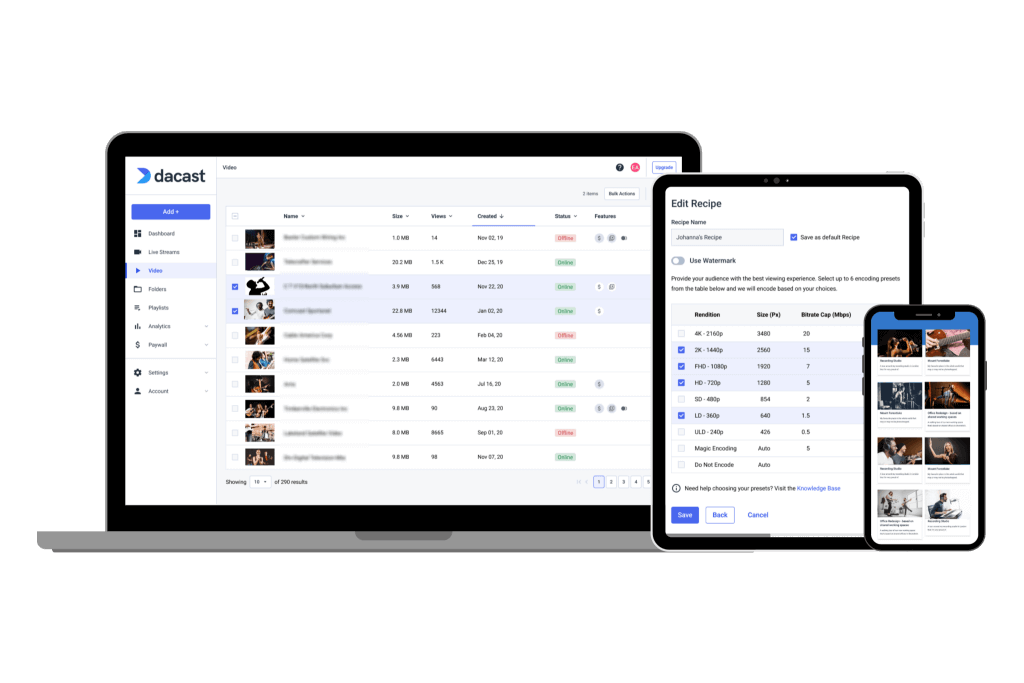
A great way to monetize video content is to build a branded VOD video streaming platform.
A VOD delivery platform is a media distribution system that hosts and shares content online. In other words, it’s a reserved internet property where visitors can directly access your content.
It requires a fast and easy-to-navigate website, where content can be delivered to almost any device. The strengths of having your own online video platform are setting your own prices, maintaining content distribution control, and adjusting your video marketing strategy based on user feedback and market demand.
Trying to build a VOD platform is a lot of work. You also have to invest in marketing the platform well. Partnering with an existing video streaming platform makes the process easy. These solutions have the infrastructure, tools, and support to get you up and running fast. Many also include built-in monetization options and security controls to manage user access.
However, the biggest advantage of building a VOD platform is that you have full control over the viewing experience and the monetization as well.
Add Monetization Options to Existing Content
If you haven’t already, consider adding a paywall to charge users for access to your existing VOD library. Subscription models are an ideal way to get started with video monetization. Once the content is created, you can keep adding to your library and building your brand.
As your following continues to grow, so do your earnings. As a result, even a small (but dedicated) audience can generate substantial income.
The best way is to use a hybrid monetization model that’s a mix of PPV, subscriptions, and advertising. This way, you can attract audiences of all three segments and drive maximum revenues.
Get Your Content in Front of More Eyes
Regarding video monetization, the more people see your content, the better. One of the best ways to increase your reach is by partnering with an OTT provider with a proven video distribution network.
Over-the-top (OTT) platform technology allows viewers to access content on various equipment, including computers, mobile devices, gaming consoles, and smart TVs (Roku, Amazon Fire TV, etc.).
Rather than being limited to proprietary broadcast networks (like cable or satellite), OTT utilizes the public internet for end-to-end transmission. So long as audiences have a connection and compatible device, they can stream OTT content, and the provider can monetize their over-the-top content.
What Kind of Video Content Can I Monetize?
After learning how to monetize videos, you might wonder which content monetization platforms can help you achieve your goals, which software solution would make the best video monetization platform for your needs, and what type of content is best for video monetization.
The video content industry is growing exponentially now, meaning viewers are willing to pay a fee to access videos of all genres.
Here are some types of video content that are trending right now and are great for video monetization:
- Podcasts
- Daily vlogs
- Tutorial videos
- Gaming content
- Product reviews
- Short video clips
- Educational content
- Music-related video content
- Videos about current affairs
- Economy and money-saving hacks
Regardless of the video monetization video platform you choose to monetize your streaming videos, make sure you understand the basics of how copyright laws work. Most monetization video platforms maintain strict rules regarding plagiarism, copyrights, and spam.
That’s especially important if you utilize content, video, or audio that isn’t your original creation. Secondly, ensure your content is always mindful of your target audience’s religious and cultural sensitivities.
Original, well-researched, and engaging content is always the best candidate for top video monetization platforms. It’s also the best way to ensure you maximize views and revenue for the videos you work so hard to create.
Where Can You Monetize Videos?
In 2025, while platforms like YouTube continue to offer vast reach, they present challenges for creators seeking to monetize their content effectively. YouTube’s monetization policies require creators to meet specific thresholds—such as 1,000 subscribers and 4,000 watch hours in the past 12 months—to join the YouTube Partner Program.
Even upon meeting these criteria, creators often face limited control over ad placements and revenue shares, with YouTube retaining a significant portion of the earnings.
Additionally, YouTube’s frequent policy changes can impact creators’ income stability. For instance, updates to content guidelines or shifts in algorithm preferences can affect video visibility and monetization eligibility. Such unpredictability makes it challenging for creators to rely solely on these platforms for consistent revenue.
To mitigate these challenges, many creators are turning to alternative monetization strategies. Subscription-based models, such as Patreon, allow creators to earn recurring revenue by offering exclusive content to their most loyal fans.
Patreon has introduced features like subscription gifting and discounts to help creators expand their subscriber base and increase earnings.
Despite these platforms’ benefits, hosting videos on your own website remains advantageous for maximizing profits, ensuring content security, and achieving scalability. By utilizing established content monetization platforms or online video streaming service providers, creators can maintain greater control over their distribution and revenue streams, leading to a more sustainable and predictable income.
What is a Video Paywall?
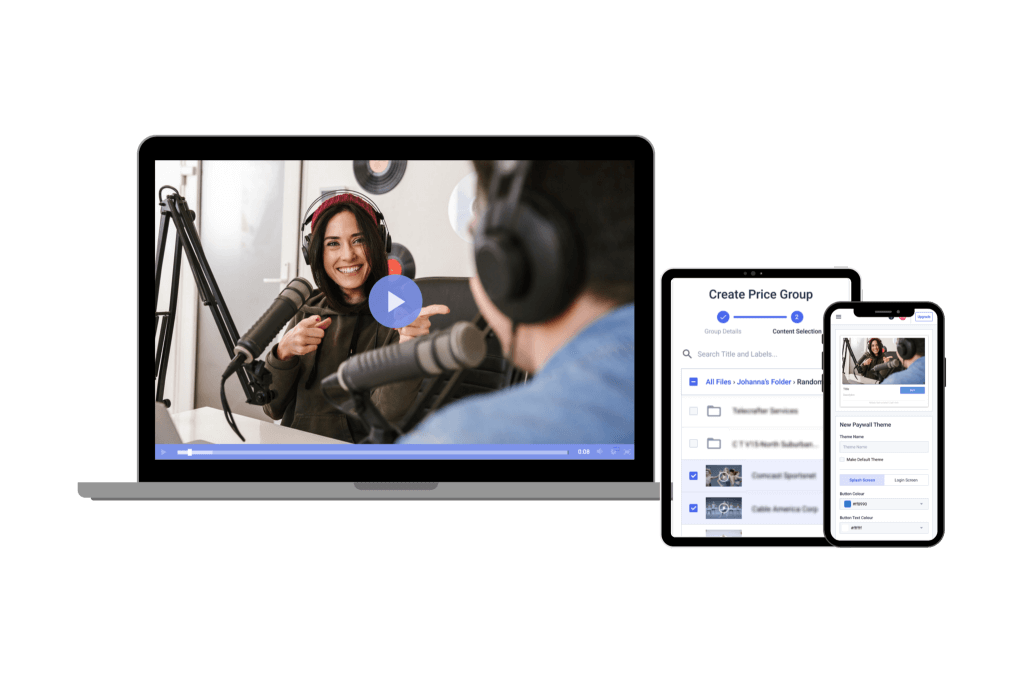
If you want to charge subscribers for content, there has to be a method in place to restrict access. That’s where a video paywall comes into play, acting as a digital payment barrier to control the flow of videos.
You need a video paywall for SVOD and TVOD monetization. It restricts free access to digital content by requiring a viewer to purchase the video or pay for a subscription to gain access to the content.
Video paywalls fit nicely with subscription models as viewers can have their accounts for library access while broadcasters earn steady recurring income. Most brands using paywalls offer free access to some content but block others with popups or login prompts. This type of streaming setup is known as a soft paywall.
Soft paywalls are an excellent way to monetize your content and align well with most streaming solutions. In addition, you can test how viewers will react to ads – without completely alienating your audience.
Setups, where no free content is offered, are called hard paywalls. Although hard paywalls can generate more revenue in the long run, you need a solid user base to make it work. Otherwise, casual visitors will look for free content elsewhere.
Hard paywalls may also limit the number of advertisers you can attract since you have a smaller audience to market to. The optimal paywall strategy is to use a combination of both. Offer free content for some users and paid subscriptions to others. Any particular video or everyday videos can be shared with general audiences, while premium content is reserved for members who opt to pay.
Video paywalls are the heart of robust content monetization strategies and offer solid ROI when implemented correctly.
Quick Overview of the 10 Best Video Monetization Platforms
| Platform | Key Features | Monetization Methods | Audience | Pricing | Pros | Cons |
| Cleeng |
|
| Creators focused on building and retaining a loyal subscriber base. | From $0.277/subscriber |
|
|
| Muvi |
|
| Creators who want to combine classic video monetization methods with product sales. | Starts from $399/month. |
|
|
| Lightcast |
|
| Businesses and organizations. | Custom pricing with a 20% transaction fee. |
|
|
| InPLayer |
|
| Music-oriented creators. | Not available. |
|
|
| Dacast |
|
| Broadcasters and small to medium businesses. |
|
|
|
| Kaltura |
|
|
| From $5400. |
|
|
| Brightcove |
|
| Enterprises looking for high-end multistreaming solutions. | Custom pricing. |
|
|
| Cincopa |
|
| Creators who want to combine video content with e-commerce. | From $25/month. |
|
|
| Vimeo |
|
| Broadcasters and companies looking to increase audience engagement. | From $12/month, with custom price for enterprises. |
|
|
| Uscreen |
|
| Creators interested in creating a membership site. | From $149/month + $1.99/subscriber. |
|
|
Key Differences Between The Video Monetization Platforms
| Platform | Ease of Use | Security Features | Device Compatibility | Customization |
| Cleeng | Moderate; integration is required | Robust fraud prevention | All major platforms and devices, including iOS, Android, Amazon, Roku, and more. | Limited |
| Muvi | Easy | Limited – only basic password protection is available. | Various browsers, Android and iOS devices, TV Apps, and Chromecast devices. | Highly customizable. |
| Lightcast | Moderate | Strong security with DRM and token protection | Android, Windows, iOS, and OSX devices. | Highly customizable |
| InPlayer | Easy | Moderate – various authentication and security features are available. | Phone, tablet, PC, laptop, tablet, and Smart TV. | Customizable |
| Dacast | Easy | Robust security with features like paywalls and tokenization. | Multi-device support. | Moderate |
| Kaltura | Moderate | Enterprise-grade security | Browsers that support WebRTC, iOS, Android, and Windows devices. | Extensive customization options available. |
| Brightcove | Moderate | Robust security – studio-grade protection | Android, MacOS, iOS, and Windows devices. | Various customization options available. |
| Cincopa | Easy | Basic security features | Windows, Mac OS, and iOS devices. | Extensive customization options. |
| Vimeo | Easy | Basic security for lower plans. | Devices with iOS 13 and Android v6 or later. | Moderate |
| Uscreen | Easy | Moderate | Android phone or tablet, v11 or later, iOS: iPhone or iPad v16.7. 5 or later. | Highly customizable |
Comparison of the 10 Best Video Monetization Platforms of 2025
Now that you know about the benefits of video monetization, the next step is choosing the best way to monetize videos. To do this, you must select a video hosting site that meets your needs. Keep in mind that some online video platforms offer native tools for monetization while others include partial or no options at all. In this case, you’ll need third-party plugins or tools to complete transactions.
Broadcasters should also review pricing and feature sets for comparable packages. Several platforms include built-in monetization options but only for enterprise-grade bundles or the most expensive plans. Keeping these ideas in mind, here is our comparison of the ten best video content monetization platforms to consider in 2025.
1. Cleeng

The first video monetization platform on our list is Cleeng – a subscription management video platform that allows you to sell and promote your video content and maintain your audience.
It supports two monetization methods – subscription-based and transactional video on demand – and comes with several flexible features like paywall options available for pay-per-view (PPV) live streaming and video-on-demand subscriptions.
What sets this video monetization platform apart from the rest is its use of AI for payments, customer support, and market segmentation. This makes it easier for you to stay proactive about your content creation business.
Also, Cleeng includes multi-language support and authentication tools for content integrity and fraud prevention.
NOTE: Cleeng works alongside video hosting software as a plugin or integration.
Pricing plans:
- Core: starts from $0.277 per subscriber, with the cost slightly decreasing as the number of subscribers increases.
- Core + ChurnIQ (marketing and analytics): from $0.383 per subscriber.
- Core + Hi5 (customer support): start from 0.636 per subscriber.
- Core + ChurnIQ + Hi5: from 0.742 per subscriber
2. Muvi
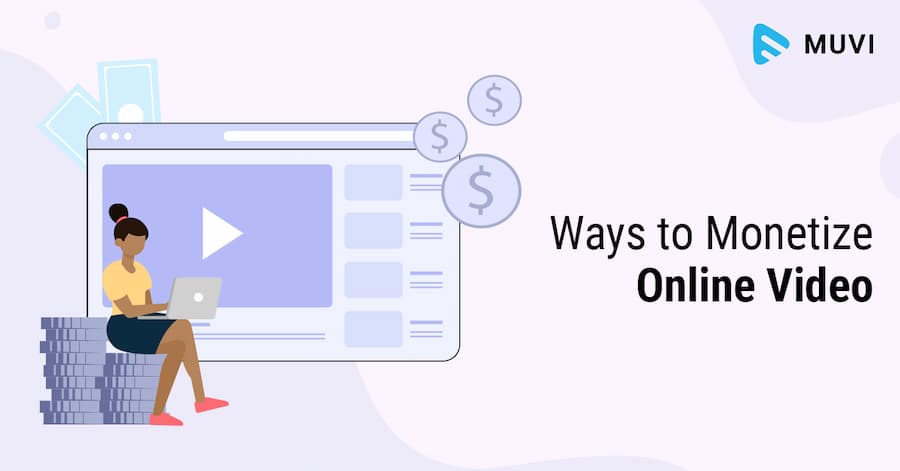
Next in our video monetization platform comparison is Muvi, an OTT-focused online video platform. But, Muvi is more than just a video monetization platform – it’s a one-stop streaming service that allows you to share video content, monetize it, and sell physical products.
It supports live streaming and on-demand video content, including a native video player and video monetization tools. The available monetization methods include AVOD, SVOD, and PPV as well as Muvi Kart, for selling items.
This platform allows you to stream video content globally effortlessly as it takes care of everything, from IT and tech features to payments. It’s highly customizable to cater to everyone’s needs and allows you to share and monetize your video content on popular social media platforms like Facebook and Instagram.
Muvi’s customization features and effortless use allowed the Fort Smith International Film Festival to successfully stream and manage movies across various rooms.
Muvi’s paywall implementation works with all major advertising, PPV, and subscription models but is less secure than other platforms. For example, there are no geographic and referrer restrictions and limited password protection.
Nonetheless, the platform’s overall security is at a high level. It comes with several top-notch security features like DRM protection and watermarks.
Pricing plans:
Muvi’s offers various pricing plans per each product.
Muvi One:
- Standard: from $399/month
- Professional: from $1499/month
- Enterprise: from $3900/month
- Ultimate: custom-built plan.
Muvi Live:
- Standard: from $99/month
- Professional: from $299/month
- Enterprise: from $799/month.
Muvi Flex:
- Standard: from $199/month
- Professionlal: from $899/month
- Enterprise: from $2899/month
Muvi Playout:
- Standard: $199/month
- Professional: $499/month
- Enterprise: $1999/month
Muvi Player SDK:
- Pay As You Go: $0/month + $0.001/view. The first 100 views are free.
- Enterprise (SDK for one platform): $499/month + $0.001/view with 100.000 views per month free. $99/month per additional platform.
Muvi TV:
- Standard: $9/month + 9% flat commission.
Muvi Alie:
- Standard: $199/month
- Professional: $899/month
- Enterprise: $1499/month
3. Lightcast
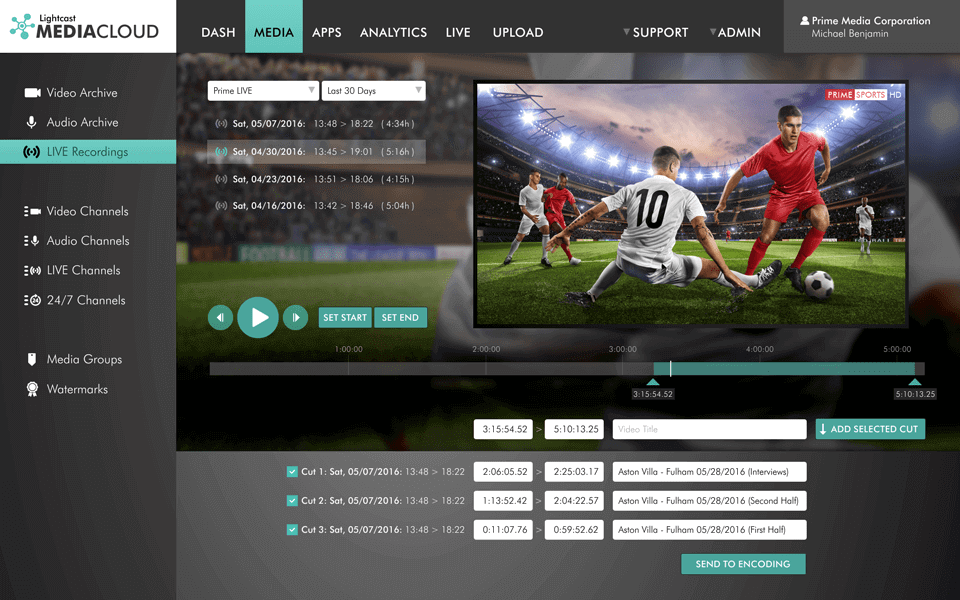
is an easy-to-use media hosting, management, and streaming platform that allows broadcasters and organizations to stream their video content across different digital channels. It also allows them to develop their mobile apps and custom SmartTV applications by providing a variety of OTT and video hosting services.
This video monetization platform automates various content streams, including live streaming, social media, and advertising. It’s suitable for various types of broadcasters, including businesses, media agencies, religious organizations, fundraising organizations, and educational institutions as it provides them the tools and technology they need to effectively reach their audience. However, it’s not the right match for individuals, a.k.a. content creators.
Lightcast combines various security features, like DRM protection, token security, and encryption, PCI compliance to ensure content safety.
While Lightcast supports all major monetization options, including SVOD, TVOD, and AVOD, as well as fundraising tools, they’re not available in all pricing plans.
Pricing plans:
No pricing info is available on the official website. However, on one of their service pages, they mention that clients pay a 20% fee per transaction.
4. InPlayer
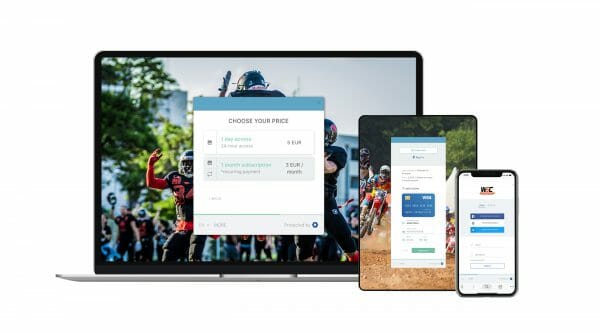
Like Cleeng, InPlayer is a top video content monetization platform and paywall solution for pay-per-view (PPV) and subscription-based revenue models. However, this one is tailored for music-oriented creators. With it, you can sell music online in various ways, including streaming audio content, monetizing music videos, selling tickets, and managing subscribers.
The InPlayer solution includes coupons, geoblocking, multiple currency options, and custom features like paying with social media outreach (a “tweet,” “like,” etc.). InPlayer uses Stripe to process payments.
Additionally, it comprises various authentication and security features like in-app authentication for payments, social sign-in services, and custom registration fields for subscribers. And, it includes API access and a native CRM system for capturing user data.
Pricing:
InPlayer no longer has pricing information published on its website, but they’ve used a revenue-sharing subscription model in the past.
5. Dacast
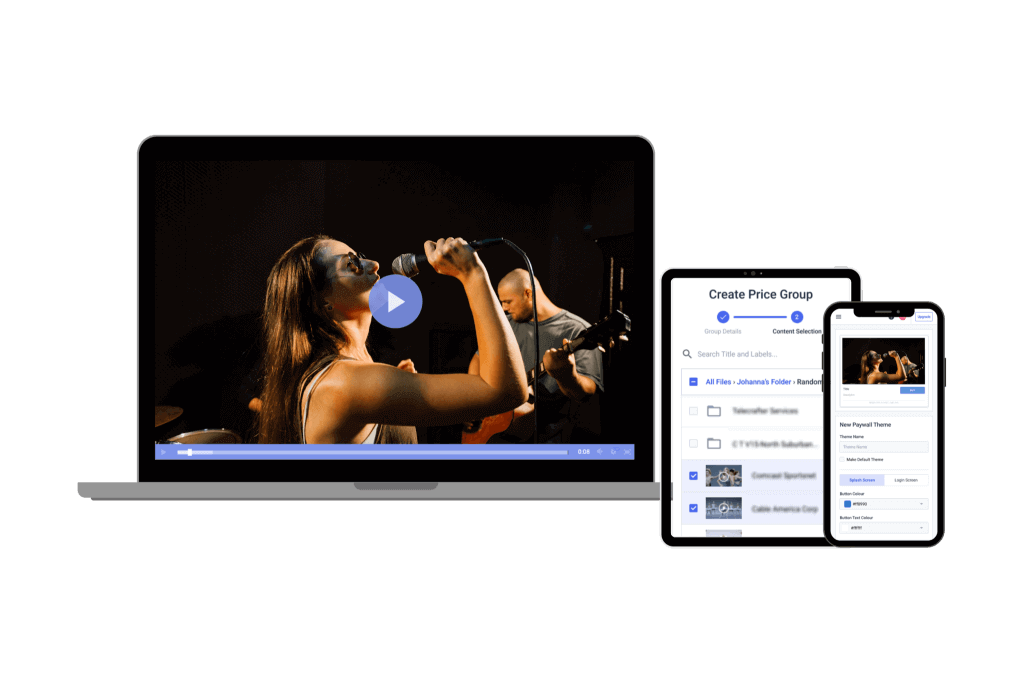
Among all the content monetization platforms out there, Dacast stands out for several reasons. First, Dacast is a video-on-demand platform supporting pay-per-view (PPV) subscriptions, and advertising monetization models. Streams are delivered via the top-tier CDN service with user paywalls integrated directly into Dacast’s white-label video player.
Our subscription management system offers weekly, monthly, quarterly, and biannual renewal options, while our paywall solution accepts 135 different currencies (and counting) and is translated into ten other languages.
With our video monetizer model, Technical assistance is available 24/7, and we offer professional support services for live events, hosted pages, and software development projects. That makes Dacast the best video monetization platform for broadcasters like you.
Streaming media audiences voted Dacast the best SMB online video platform of 2019 and runner-up for educational video delivery. In addition, broadcasters have nominated (and placed Dacast in the top three) for multiple award categories six years in a row!
Pricing plans:
Live streaming pricing starts at just $39/month for the Starter plan and includes:
- Starter Plan: $39/month (includes 2.4 TB of bandwidth & 500 GB of storage)
- Event Plan: $63/month (includes 6 TB of bandwidth upfront and 250 GB of storage)
- Scale Plan: $165/month (includes 24 TB of bandwidth per year and 2 TB of storage)
- Custom plan: Contact us for custom pricing plans
The most notable of Dacast’s online video platform features are:
- Live streaming and Video on Demand are included in all plans
- Wide range of video monetization tools
- Top-notch dynamic token security
- Low-latency video streaming
- Ad Network Integration with Ad Insertion
- Video Paywalls
- Unlimited Viewers and Live Channels
- Multi-user access on Scale and Custom plans
- Zoom live streaming integration for meetings and live events in real-time
- Expo 2.0 galleries video portal for immersive video experiences
- Mobile streaming support
- Real-time Analytics
- Ad-free Streaming
6. Kaltura
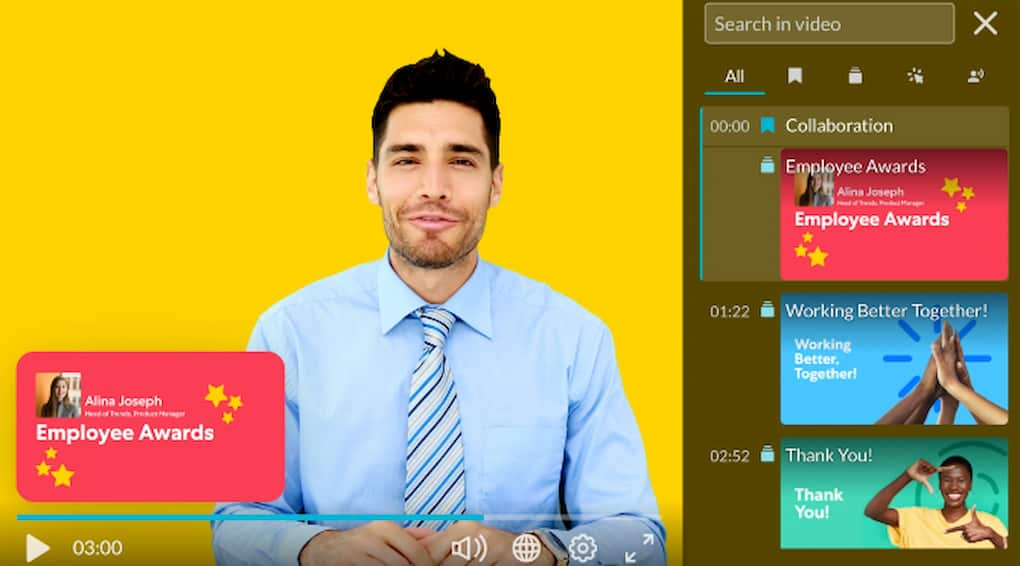
Kaltura is an open-source online video platform that provides a highly customizable streaming experience. Within these customizations, broadcasters can integrate various video monetizer tools and systems.
Creators can choose between various monetization methods, including AVOD, TVOD, and SVOD monetization models.
It promises to deliver extraordinary service for whatever streaming needs you may have, from virtual classrooms to webinars to events, to help boost your engagement, reach, and ROI. It also features a dedicated video portal for users to easily access content.
Pricing:
The pricing structure of Kaltura is complex as each solution (virtual classrooms, events, webinars, etc) has a separate price.
These include but are not limited to:
- Limited Trial: $1 for two webinars
- Business: $199/month (or $150/month when billed annually)
- Enterprise: Custom pricing
- Free trial: 14 days; up to 25 participants per session
- Basic: $19/month (or $17/month when billed annually); up to 8 participants per session and 8 hrs of cloud recording
- Pro: $55/month (or $50/month when billed annually); up to 25 participants per session and 15 hrs of cloud recording
- Business: $125/month (or $115/month when billed annually); up to 100 participants per session and up to 25 hrs of cloud recording
- Business Plus: Custom pricing for up to 300 participants per session, unlimited sessions and custom storage needs
- Annual discounts: Discounted pricing packages available for any scale and use-case, enterprise SLA, and developer support
- Limited trial account: $1 for $100 worth of credits for 30 days for testing and experimentation, with no commitments
- Pay as you go – You pay only for what you use at these credit levels:
- Base plan: $20 one-time annual fee + monthly usage fees
Other services include virtual events, video portal town halls, video messaging, meetings, and more.
7. Brightcove
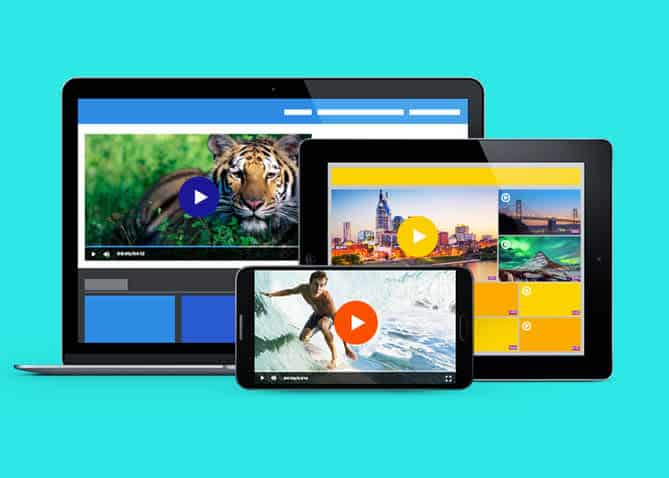
Brightcove is a high-end streaming solution with a built-in video monetization platform. It allows smooth video streaming across the web, mobile devices, and smart TVs. It also supports multiple video monetization methods, including AVOD, SVOD, and TVOD. And, it provides users with marketing tools and analytics for the audience reached.
The advertising features from Brightcove are pretty innovative. This platform offers server-side ad insertion, allowing it to serve ads even when viewers use ad blockers. It also provides ad cue points for pre-, mid-, and post-roll advertisements.
Another remarkable aspect of Brightcove’s video monetization is that it uses metadata to serve targeted video ads. But, that’s not all.
Brightcove also comes with strong security features like IP restriction, studio-grade content protection, and URL tokenization. Moreover, it follows the ISO 27001 standards and is certified by the CSA STAR registry and Digital Production Partnership (DPP).
Pricing plans:
Brightcove has multiple pricing plan levels to meet each broadcaster’s unique OTT hosting needs. Here is what we currently know about their pricing structure:
- Basic Plan: Starts at $99 per user per month, which includes core video hosting and management functionalities. This plan is well-suited for businesses with basic video needs, such as small content libraries or internal communications.
- Enterprise-Level Plans: These plans are highly customizable and include advanced features such as live streaming, in-depth analytics, security options, and robust integrations. Pricing is tailored depending on the specific needs of the business, including audience size, storage requirements, and additional services like video monetization and support.
- Customization Costs: Enterprises may face additional expenses for features like platform customization, data migration, employee training, and ongoing maintenance. These costs can range from a few thousand dollars to significantly more, depending on the complexity of the requirements.
- Free Trial: Brightcove offers a free trial for prospective users to test its features before committing to a subscription, which is a helpful option for evaluating its capabilities in real-world scenarios.
Please contact their sales department to find out the pricing structure for their live streaming features.
8. Cincopa
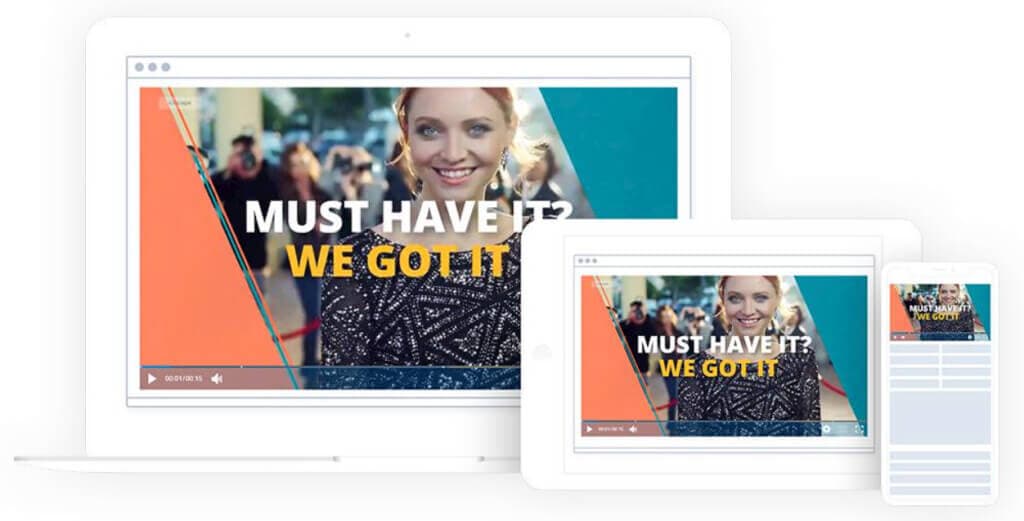
Cincopa is a multimedia hosting software with a built-in video monetization platform for generating live and on-demand content revenue. It supports two video monetization methods – subscriptions and advertising.
You can create tiered subscription plans and charge a one-time fee for various types of content and access rights. When it comes to the ads, you have full control over your ads’ design, placement, and frequency. Like Brightcove, this platform also supports pre-, mid-, and post-roll ad insertion.
Cincopa also offers Paygate API, which helps users customize their monetization methods to fit their needs best. Additionally, it supports e-commerce integration which allows creators to add multimedia content to their websites for improved product/service promotion.
Pricing plans:
Cincopa offers four pricing plans for multimedia hosting:
- Plus: $25/month; 50 videos, 75 audio/podcast files, 1 TB monthly traffic
- Corporate: $99/month; 250 videos, 300 audio/podcast files, 2 TB monthly traffic
- Enterprise: $350/month; unlimited videos, audio/podcast files, and monthly traffic
- Custom Enterprise: Custom pricing; dedicated account manager, SSO
9. Vimeo OTT
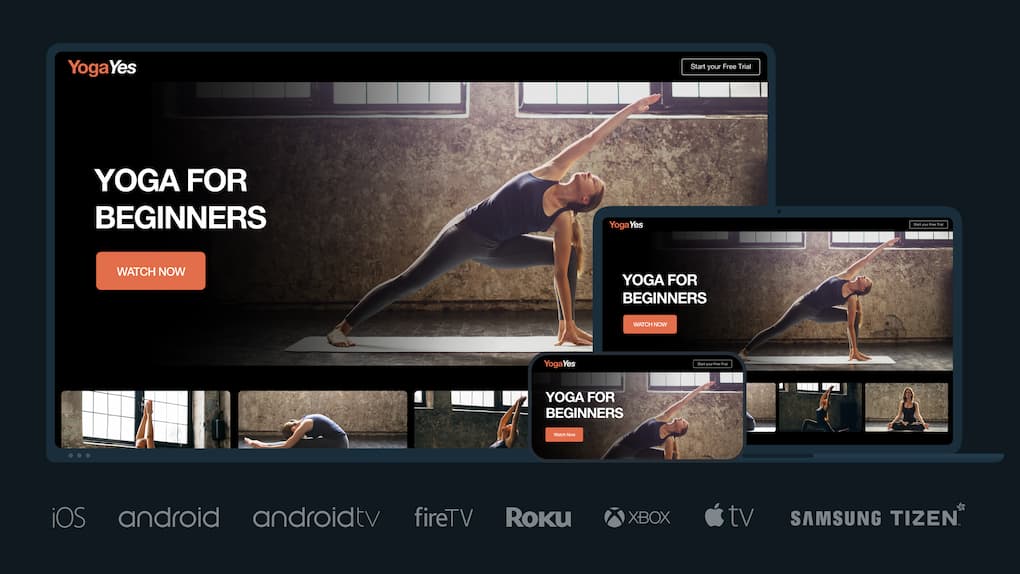
Vimeo acquired Livestream in 2017, which gave Vimeo the ability to offer live video streaming solutions. Vimeo’s OTT solution is one of the three advanced solutions that Vimeo has available for streaming service providers under the Livestream name.
Vimeo OTT is a specialized video hosting solution designed specifically for broadcasters using the OTT streaming service business model. Vimeo OTT supports TVOD, AVOD, and SVOD monetization models.
Pricing plans:
Vimeo Livestream offers its OTT product on a completely separate payment structure:
1) Vimeo OTT:
- Vimeo’s OTT solution is priced separately from the regular Vimeo packages. There are two plans: Starter and Enterprise.
- Starter Pricing: $1/subscriber per month
- Enterprise Pricing: Please contact Vimeo for custom pricing information
Vimeo also diversifies its offering with video hosting plans that are suitable for content creators and startups.
Pricing if billed monthly, is as follows:
- Free: $0/month; 1 GB storage, creation and editing, screen recording
- Starter: $20/month; 100 GB storage, auto closed captioning, custom URLs and video player, privacy tools
- Standard: $41/month; 1 TB storage, engagement and social analytics, AI script generator, teleprompter, brand kit
- Advanced: $108/month; 5 TB storage, stream to multiple destinations, host live broadcasts and webinars, AI-generated chapters and text summaries
- Enterprise: Custom pricing; more storage and bandwidth, advanced AI capabilities, quality events, dedicated support
All plans are billed annually.
10. Uscreen

Uscreen is a TV-grade video hosting platform and software with a built-in video monetization platform. This video monetization solution is equipped with support for subscription and pay-per-view (PPV) video monetizer models and one-time purchases. It’s designed to generate revenue for OTT video streaming services like Netflix or Hulu.
You can use Uscreen to share live streams and on-demand content. It comes with built-in community-building features and offers users a dedicated app for their video library.
This all-in-one video monetization platform is an excellent choice for content creators who want to build a community-driven membership website. It’s easy to use and lets you create an easy-to-navigate video library.
All you need to do to monetize your videos with Uscreen is create a subscription site and share your live streams, on-demand video content, or 1-time events.
Pricing plans:
- Growth: $199/month + $1.99 per paid member/month.
- Pro: $499/month + $1.49 per subscriber/month.
- Plus: Custom pricing for established creators who need full brand control across all platforms, including live streaming and live chat, with all Uscreen branding removed.
Emerging Video Monetization Platforms to Keep an Eye On
Apart from the top video monetization platforms mentioned above, there are a few promising ones to consider. Although relatively “younger”, these platforms come with features that can help you serve your video content to the right audience with ease.
Connatix
Connatix has recently merged with JW Player, aiming to create the biggest video technology and monetization platform. Make sure to keep an eye on this merging to see what it brings.
Meanwhile, Connatix, on its own, offers its unique feature – digital signal processing (DSP) tools, which can feel what consumers are interested in and recommend the most relevant video content. This will be a great advantage in a cookieless world, which internet browsing authorities try to achieve.
Apart from this, Connatix provides you with integrated easy-to-use video creation and editing tools and allows you to launch and manage your ad campaigns. It supports AVOD monetization strategy and offers custom pricing for enterprises.
VlogBox
VlogBoz is a marketing agency and video monetization platform for CTV channel owners. It’s best for creators who want to share their videos on smart TVs.
Unlike most popular monetization sites, this one helps you develop an app, launch it, and promote it, so you can start earning money from your video content more easily. It supports AVOD and SVOD monetization methods and the cost is based on a rev-share model, with prices ranging from $399 – $1,099+ per month.
8 Things to Consider When Choosing a Video Monetization Platform
Choosing a video monetization platform among the many options available on the market can be hard and time-consuming. To make things easier, we’ve prepared a list of factors to consider when deciding.
- Ease of use and customization: The platform must be easy to use, with a user-friendly interface, and highly customizable. You want to have the freedom to customize and manage your video content. Look for platforms that offer customizable video players, content management systems, and automated workflows.
- Monetization methods available: Make sure the platform supports your preferred monetization model. It’s best to go for sites that support various monetization methods as this allows you to offer your audience multiple options to pay and consume your content.
- Audience type: Not all monetization platforms cater to the same type of audience. That’s why it’s important to consider which platform is best suitable for your type of audience.
- Advanced Paywall feature: Consider the payment options the platform offers consumers to make sure they have enough methods to choose from. Also, to ensure smooth finance management and a simple overview of your earnings, look for a platform with a comprehensive dashboard containing information about the most popular content, recent payments, and the average value of your orders.
- Price: Some video monetization platforms are more suitable for enterprises and agencies rather than individual video content creators. So, make sure you check the pricing page before making up your mind. Also, consider the available pricing tiers and whether they offer clear and flexible costs to support your business and audience growth.
- Simple payout options: Most platforms allow payments on your behalf, and you should look for one like that. Your income streams should be frequent, through a method that suits you, and available when you want. Consider the payout fees and keep in mind that your payment process or bank might have additional transactional fees.
- Security features: Many creators overlook the security features platforms offer, but they are some of the most important things to consider when looking for a reliable monetization platform. Go for a platform that has built-in security features like multi-factor authentication, dynamic tokens, DRM protection, encryption, and PCI compliance.
- Multi-language and -currency support: Whether you broadcast internationally or attract audiences from different countries across the globe, being able to translate your content into their language and offer them to pay in their local currency is a great asset.
The Future of Video Monetization
The continuous development of AI, machine learning, blockchain, and VR/AR technologies and their implementation in various industries promises the rise of new trends in video monetization and the overall content creation industry.
Here’s how these technologies are expected to impact video monetization platforms and the process in general.
AI-driven ad targeting, placement, and personalization
AI and machine learning revolutionize online advertising, offering more efficient ad delivery. Artificial intelligence for video streaming technologies improve audience targeting and ad placement and help you create content tailored to your audience.
Implementing them into your AVOD model will help you create personalized ads adaptable to users’ preferences in real-time and placed where they’ll be most effective.
Blockchain-powered revenue
Blockchain technology will serve both publishers and subscribers preventing ad frauds and ensuring transparent and fair compensation for creators. Decentralizing ad transactions will also allow better ad performance tracking, ensuring creators instantly get their share upon their ads being watched.
Microtransactions and TVOD monetization model on the rise
The uprise of personalization in content marketing will impact how users pay for the content they consume. One-size-fits-all subscriptions will no longer work, with microtransactions and TVOD taking over.
These models will allow users to pay for the content (or chunks of content) they want to watch when they want to watch it. For example, a TV series fan may pay a small fee to watch an episode of their favorite series, not the entire show.
Interactive video content
Monetization will not include only content consumption but direct interaction as well. Creators will add clickable elements, narratives, and or quizzes to encourage users’ engagement with the content. For example, users can pay to access personalized workouts in real time.
Shared subscriptions
Apart from personalized subscriptions, creators will offer shared subscription plans to make their content accessible to everyone. Offering a split subscription model, creators will make their content more inviting and will attract more consumers.
E-commerce integration
E-commerce has already found its way into content via shoppable ads and posts, offering viewers the option to purchase one click. Now, it slowly starts integrating into video content.
Soon, content creators will offer viewers to buy a product from a video with a click or voice command. Moreover, live streams will become shopable, allowing consumers to shop for items directly through the live stream.
Gamification
VOD platforms will gamify their video content to reach the younger audience. They may incorporate loyalty points for watching content which can be later redeemed for exclusive benefits. Additionally, they may add gamified elements to the content to increase viewing time and boost sales by offering conditioned and immediate rewards.
Although we can’t say for sure what the future holds, video monetization will definitely evolve and adapt to consumers’ needs.
FAQs
1. How do I monetize my video content?
There are several ways through which you can monetize your video content. The most common techniques employed by businesses include advertisements, subscriptions, and PPV (pay per view). These monetization methods are called advertising video on demand (AVOD), subscription video on demand (SVOD), and transactional video on demand (TVOD).
2. Can a 30 second video be monetized?
Yes, it’s very much possible to monetize a video that’s as short as 30 seconds. However, this totally depends on the platform you choose to upload it on. With a platform like YouTube, this is completely possible as long as you’ve fulfilled the YouTube monetization guidelines and thresholds.
3. Which platform pays most for videos?
Among social media and video sites, the best paying platform is YouTube that has a low threshold for monetizing videos and also pays creators well. In fact, several creators on the platform earn in millions solely through their videos. This is much higher than what other platforms enable.
4. How much does Rumble pay per 1,000 views?
Typically, you can expect to earn anywhere between $2 to $10 for every 1000 views that your videos garner on the platform. This payment rate fluctuates based on the type of ads shown and the cost of those ads for the advertisers.
5. How do you monetize live streaming?
There are several ways through which you can monetize your live streams. You can ask users to sign up for the live stream and charge them for it in advance. Alternatively, you can provide the stream as a part of a subscription package and earn from it. You can also put up ads inside the live stream and charge advertisers for it. Finally, you can partner with brands who are willing to sponsor your live stream.
Conclusion
Video monetization is a catalyst for growth, profit, and sustainability. So if you’re a video content creator, claim your share of this growing trend. One of the best ways to jump on the bandwagon is to utilize a platform that supports your growth.
Dacast makes it easy to profit from live streaming content or existing video-on-demand libraries. The platform supports its users in multiple ways, from its easy-to-understand video analytics tool that seamlessly transforms data into actionable steps. Or its sturdy 24/7 user support ensures your viewers enjoy uninterrupted streaming around the clock.
Our powerful online video solution offers enterprise-grade performance, security, and monetization features, all for a single low price.
Each package includes secure video streaming, reliable performance via top-tier CDNs, and customizable video content and player management APIs. No other solution offers so much value at such an affordable price.
Providing quality content to audiences is more critical than ever, and organizations that do it well can generate substantial revenue from ads, subscriptions, and pay-per-view transactions.
Learning how to monetize video content more effectively can open up new revenue streams for your business or organization. As a video content creator or broadcaster, content monetization platforms are an essential tool that lets you make the most out of your video creations. Dacast enables you to monetize videos without extra steps or hassle, so you can focus on creating quality content for your viewers.
Contact us today if you are ready to add video monetization to your content strategy. We offer a free 14-day trial without requiring long-term contracts or charging hefty setup fees. No credit card is required.
For regular live streaming tips and exclusive offers, you can also join our LinkedIn group.
Video Monetization
Monetize your Live Broadcasts, Events and Channels!
Set up as many pay-per-view streaming prices as you want on your video content. Control rates, promo codes, and viewing windows. Monetize your video content with secure, easy-to-use features. Facilitate global payments, control rates, and promos using an advanced paywall built right into the player.
No credit card required. By clicking Start Free Trial you agree to ourterms and conditions.
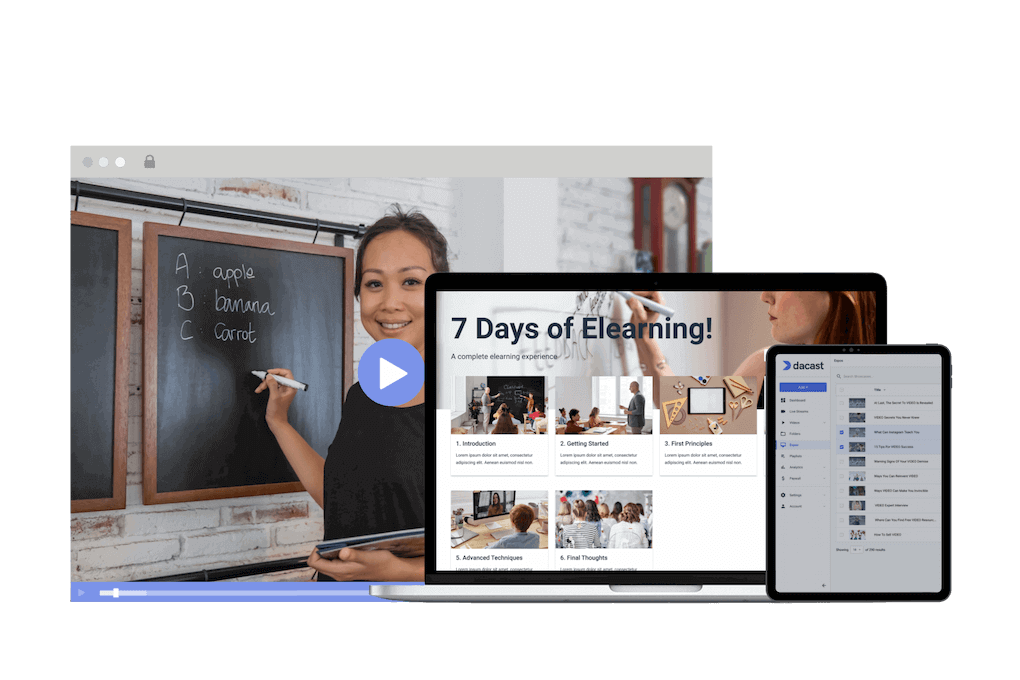
Subscription Management System
Support for SVOD, AVOD, TVOD.
Charge viewers a fee for unlimited access to your video content. Use monthly or even weekly subscription structures. Learn MoreSecure Integrated Paywall
Group Pricing, Live, and Hosted Event Support.
Secure paywall allows users to charge viewers with either a pay-per-view or subscription-based video monetization system. I'm Interested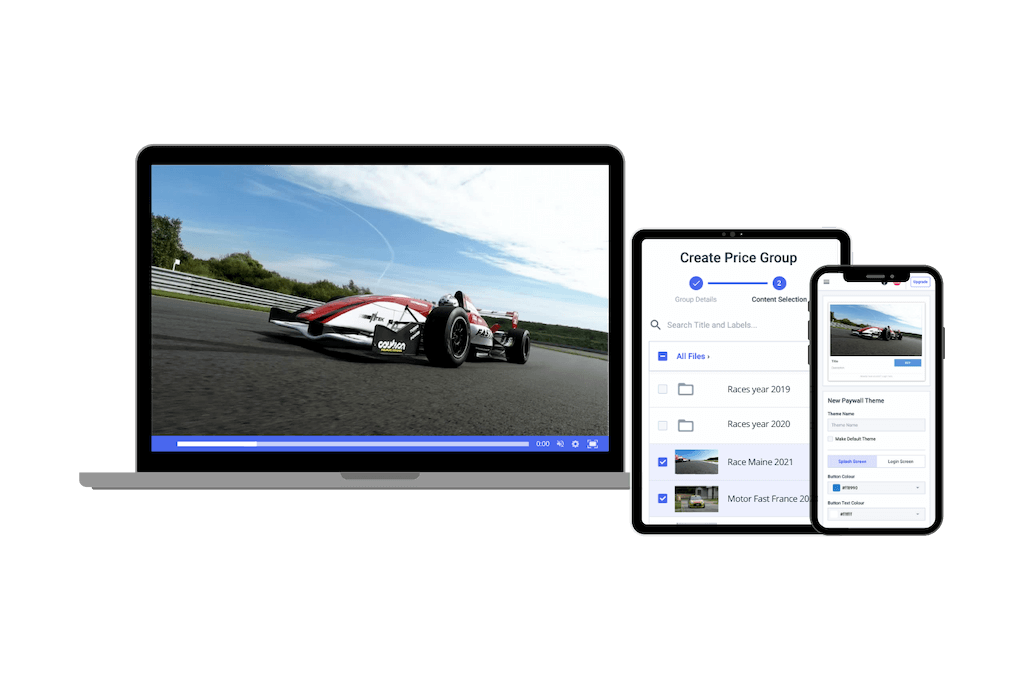
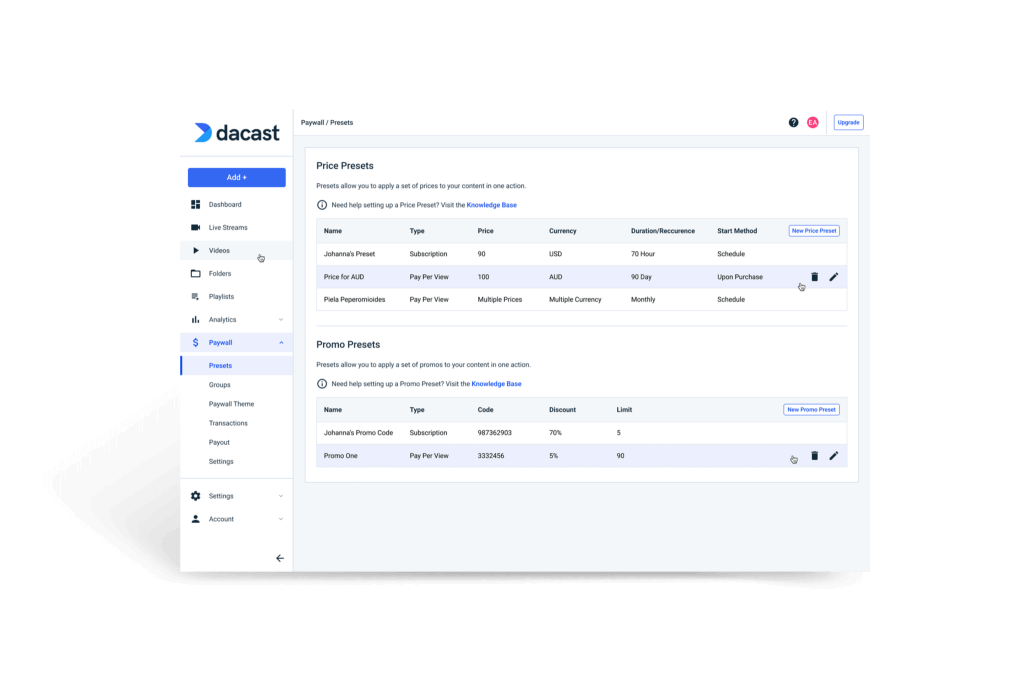
Global Currency Monetization
Engage Your Audience, Maximize Revenue.
Dacast automatically converts currency on paywalls to reflect the cost of streaming to the currency of the viewer. Get the DetailsLive Event Support
24/7 Customer Support at No Extra Cost.
Take advantage of Dacast’s live technical support to keep your paid streams running smoothly. Let's Go
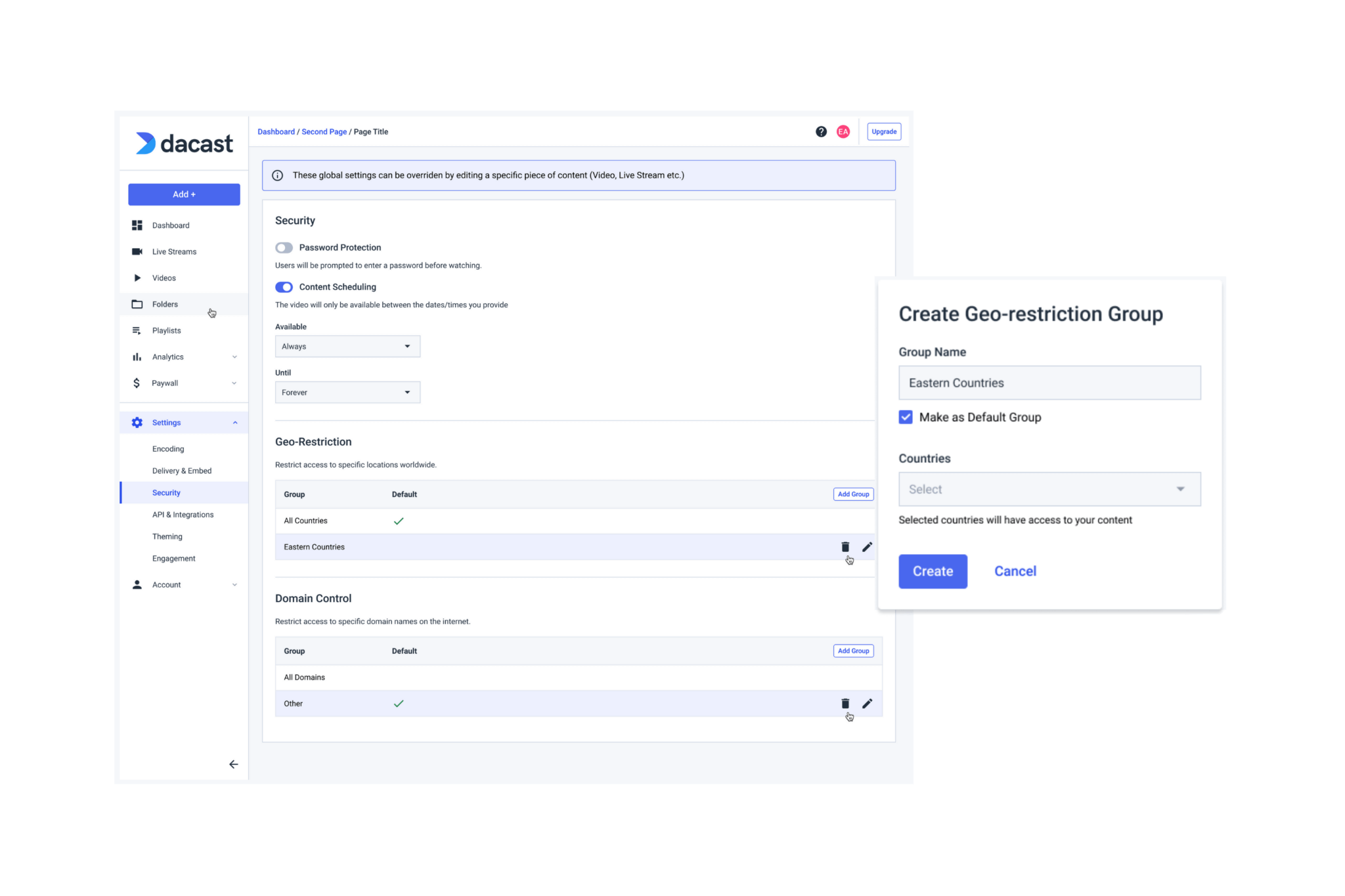
Multilingual Interface & Support
Includes 135 Currencies and 10 Languages.
Dacast automatically converts currency on paywalls to reflect the cost of streaming to the currency of the viewer. I'm InterestedGroup Pricing
One Ticket, Multiple Content Options.
Offer group pricing—or channel packages—to your viewers. This allows them to pay a one-time fee for unlimited access to your content. Explore Pricing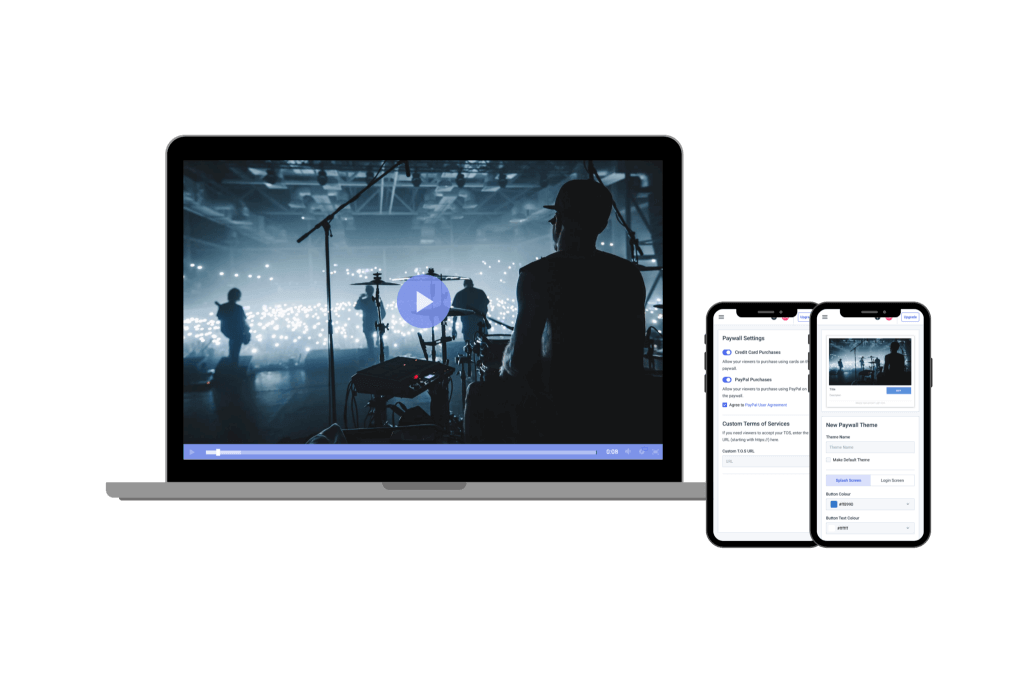
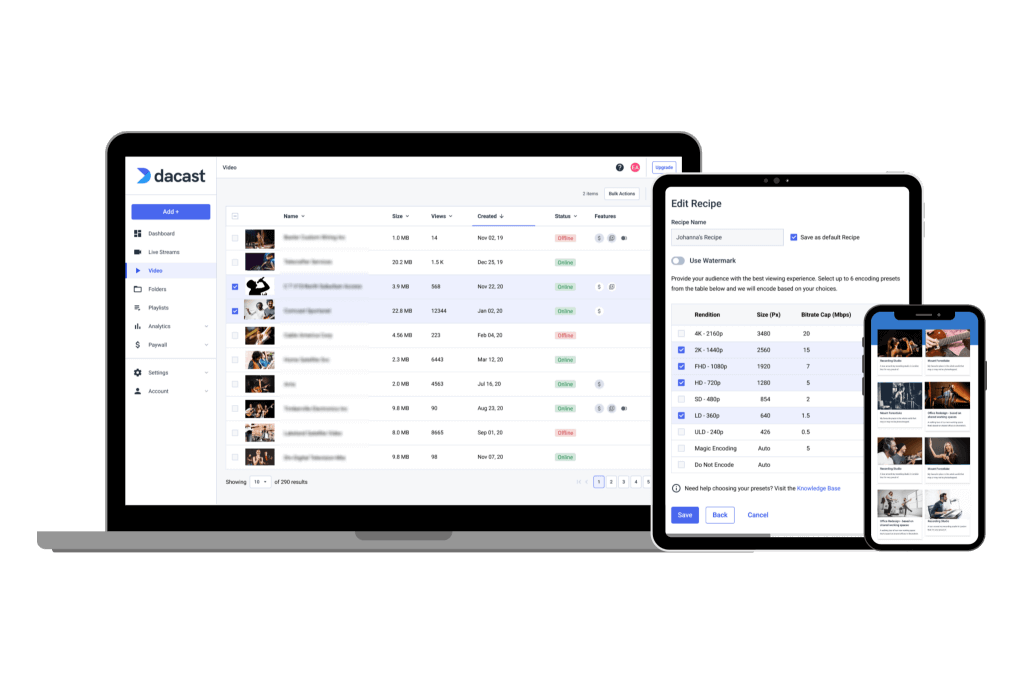
High Performance with Top Tier CDNs
Get the best streaming quality at no extra cost.
Stream live video securely with the world’s best live streaming CDNs. Access our 24/7 live streaming platform with full scalability and compatibility. Get Started“The support that Dacast offers is particularly good compared to other streaming providers, making them a clear choice for my business.”
CEO at ComeSee TV
24/7 Technical Support
The reliable help you need, when you need it
Our customer service team is here 24/7 to help you make the most of your streaming solution. Plus access a comprehensive knowledge base and dynamic online community of professionals.
SupportMost Popular Features

Mobile Streaming
Stream live to phones
Our HTML5 video player ensures compatibility with modern devices and browsers. No configuration is required, whether on a smartphone or a smart TV.
Learn more
White-label Platform
Your logo, your brand
Customize our video player with your logo and colors to put your brand front and center. The look and feel of your content are completely up to you.
Show Me How
High-Definition
Broadcast in full HD quality
Deliver pristine, quality video with multi-bitrate technology in full HD 1080p resolution to ensure that every viewer has an optimal experience.
Stream in HD
Embed Videos
Share video content
Use embed codes to easily share a video or live stream on any web page. Or, share videos with others via social media.
Get Started
Video Transcoding
Deliver your video
Use our transcoding services to offer your viewers the video quality they need according to their devices.
Let's Go
Secure Video Upload
Handle your video library
Bulk upload your video and add the layer of security your want. Access more video uploading and security tools via our advanced video hosting platform.
Upload SecurelyBest Streaming Pricing
Feature-rich and cost-competitive
Dacast is the only video platform offering high-performance live streaming and video hosting features at the best prices on the market.
Check It Out6 Reasons to Choose Dacast
Live Streaming and Video Hosting Platform
 Stream
Stream Connect
Connect Manage
Manage Measure
Measure Events
Events Business
Business Organizations
Organizations Entertainment and Media
Entertainment and Media API
API Tools
Tools Learning Center
Learning Center Support
Support Support Articles
Support Articles